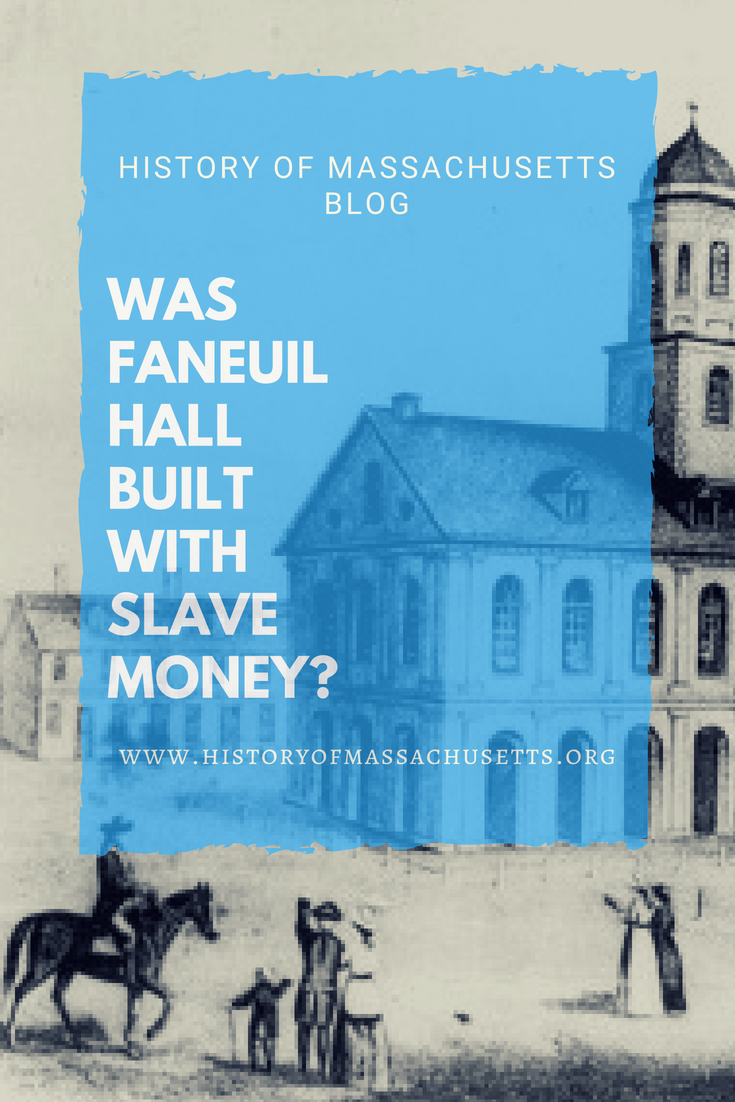It’s a little known fact that Faneuil Hall, which has been dubbed the “Cradle of Liberty” since the American Revolution, was financed with money from Peter Faneuil’s slave trading business.
Peter Faneuil was a wealthy slave trader and Boston merchant who, in 1738, inherited a large fortune from his uncle Andrew Faneuil, also a local slave trader who owned a warehouse on Boston’s Merchant Row where he sold his slaves.
The Faneuils weren’t the only or even the first slave traders in Massachusetts. In fact, slavery in Massachusetts had existed since the early days of the Massachusetts Bay Colony in the early 17th century.
Peter and Andrew Faneuil were prominent in the Triangle Trade. This was a shipping route where merchants shipped fish and lumber from New England to Africa and then shipped slaves from Africa to the West Indies.
After selling the slaves in the West Indies, the merchants would then purchase molasses, sugar cane and rum from the local sugar plantations to bring back to the American colonies.
In July of 1740, Peter Faneuil offered to build a public marketplace for the city of Boston using his own money he and his family made off of this triangle trade.
At the time, there was no marketplace for peddlers to sell their goods and they often clogged up the lanes and roads with their pushcarts.
After commissioning local artist John Symbert to draw up plans for the building, Faneuil then offered the proposed marketplace as a gift to the city of Boston.
Over 700 Boston town meeting members debated whether to accept the gift before finally voting in favor it.
Construction on Faneuil hall began in 1740 and took nearly two years to complete. The plan for the building included an open ground floor for a meat and produce market and a large assembly room on the second floor.
The steeple of the building was topped with a 38 pound gold-gilded grasshopper weather vane that was based on a similar grasshopper weather vane on top of the London Royal Exchange.
Peter Faneuil died of dropsy just six months after the building was completed in 1742 and the city decided to name the building “Faneuil Hall” in his honor.
In 1761, a fire gutted the interior of the building but it was quickly rebuilt. The building was enlarged in 1806 by Boston architect Charles Bullfinch, who doubled its width and added a third floor.
During the American Revolution, the large second-floor assembly room became a hot spot for patriotic speeches and meetings, leading patriot James Otis to dub it the “Cradle of Liberty.”
Sources:
McClanahan, Brian. The Politically Incorrect Guide to the Founding Fathers. Regnery Publishing, 2009
Baird, Charles Washington. History of the Huguenot Emigration to America, Volume 2. Dodd, Mead & Company, 1885
Marchione, William P. Boston Miscellany: An Essential History of the Hub. The History Press, 2008



Jeeze! Our Nation’s Capitol is named after a guy who owned a plantation worked by slaves! The time has come to rename Washington DC and posthumously impeach the First President for doing something that was STILL legal at the time! So WHAT if he risked being hanged by the British for years in pursuit of Independence: what has he done for us lately?!!
-Now about this “Jefferson” fellah and his so called “Declaration of Independence”!
It’s about time we punished these long dead people for not being perfect like the leaders we have now!